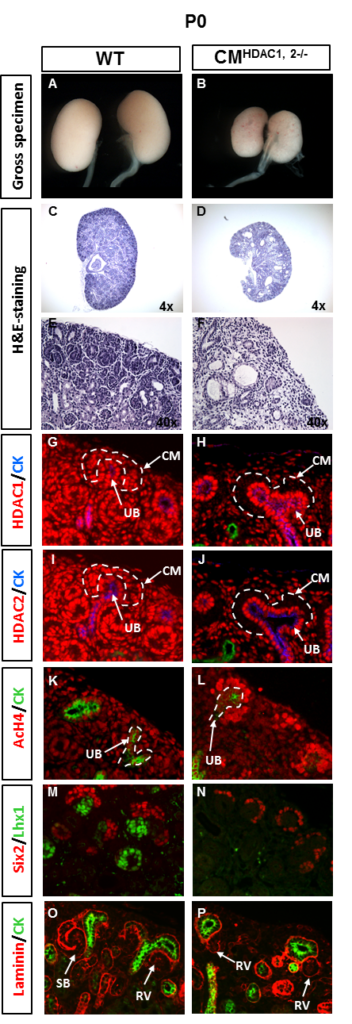Histone Deacetylases 1 and 2 in Kidney Development
About

Congenital Anomalies of the Kidney and Urinary Tract (CAKUT) are a major cause of morbidity in children, constituting approximately 20~30% of all anomalies identified in the prenatal period. CAKUT plays a causative role in 30~50% of cases of end stage renal disease (ESRD) in children, and predisposes to the development of hypertension and other renal-cardiovascular diseases in patients that survive to adolescence and adulthood. Therefore, CAKUT poses a significant economic burden on health care systems related to the patients’ lifelong costly therapeutic needs. The long-term goal of our study is to uncover the epigenetic mechanisms accounting for CAKUT. We propose to investigate the nephric lineage-specific functions of class I histone deacetylases (HDACs), HDAC1 and HDAC2, in kidney development. HDACs are an evolutionarily conserved group of enzymes that remove acetyl groups from histones as well as non-histone proteins. It has become clear that HDACs regulate gene expression in a highly selective way and exhibit both repressive and activating effects. Our preliminary data indicate that HDAC1 and HDAC2 play redundant yet essential functions in the renal progenitor cells. Double deletion of HDAC 1 and HDAC2 in the renal progenitor cells by Six2-Cre depletes renal progenitor cells and blocks nephron formation at the renal vesicle stage, due to defective cell proliferation and differentiation. We also found the double deletion suppressed Lhx1 independently of Wnt4. Lhx1 is a transcription factor that is required for differentiation of nephron precursors into nascent nephrons. Therefore, we hypothesize that HDAC1 and 2 in the renal progenitor cells are necessary and required for nephron segmentation during kidney development acting upstream of HNF1 and Notch signaling pathways
Fig. 1. CM-specific deletion of HDAC1/2 causes renal cystic dysplasia at birth (P0). HDAC1 and 2 were expressed in the CM and ureteric buds (UB) in wild type newborn mice (Fig. 1G, 1I). In contrast, in CMHDAC1, 2-/- mice (Six2-Cre+/-, HDAC1flx/flx, HDAC2flx/flx), HDAC1 and 2 were not detected in the CM, but were expressed in the UB (Fig. 1H, 1J). CM: cap mesenchyme
